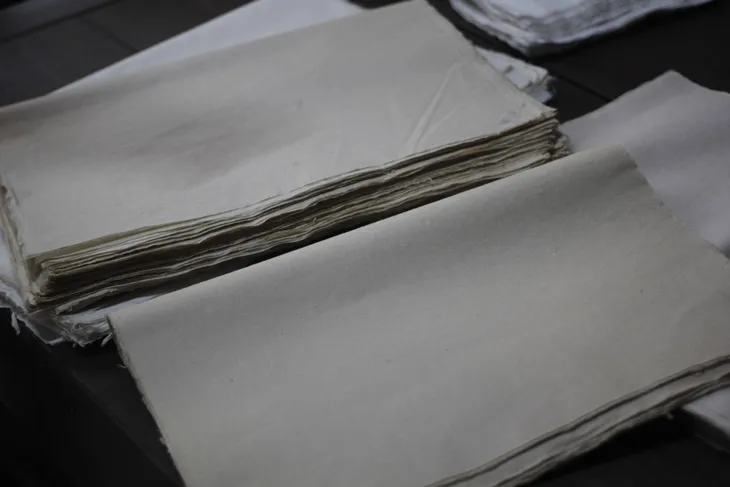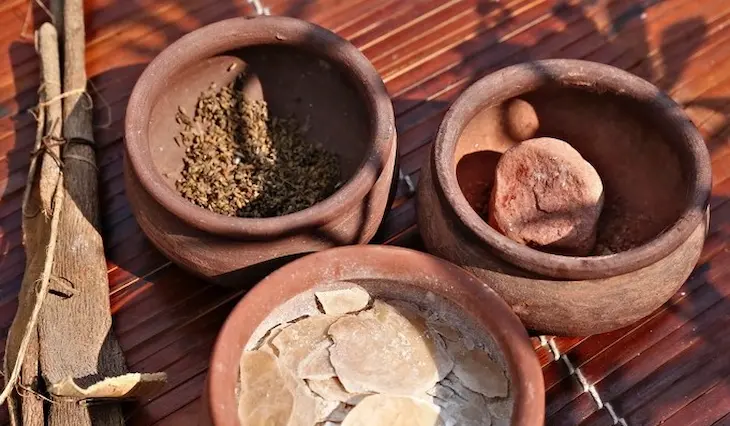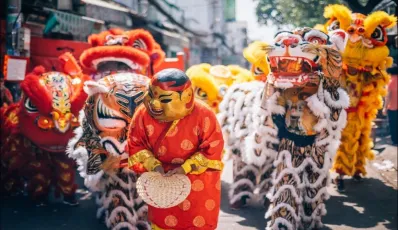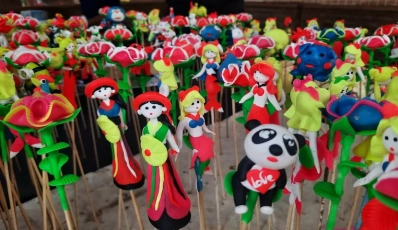If you are an art lover, especially love hand painting, you'd better visit Dong Ho village to admire the Vietnamese folk art which is named after the place. This beloved Vietnamese folk art of Dong Ho is characterized by its use of woodblock printing and vivid, natural colors. Viewers are captivated by the distinctive allure and expert craftsmanship of these elaborate pieces of art, which portray regional narratives and customs.
Come with us to explore the enchanting world of Dong Ho painting, a beloved folk art of Vietnam, and its mesmerizing creativity.
1. Origin of Dong Ho Painting
Located 30 km east of Hanoi in Song Ho commune, Thuan Thanh District, Bac Ninh province, Dong Ho Painting Village (officially Mai Village) is a picturesque spot on the southern bank of Duong River Dyke. Experts believe that those workers began to print drawings during the leadership of the Le Dynasty; however, locals claim that the practice of Dong Ho folk painting dates back to the Ly Dynasty in the 11th century. Hang Trong, Kim Hoang, and Sinh Town were among the few places that possessed the tradition of producing folk art during that time. From cutting the woodblocks, distributing "điệp" papers, acquiring common colors inventing new themes, and printing, every artisan in Dong Ho was involved in the assembly of artworks.

Dong Ho paintings were once highly prized as a way to celebrate the Tet Holiday; Vietnamese people would purchase them to hang on their homes for a year and then swap them out for new ones when the new year came. Artists of various eras have found inspiration in Dong Ho paintings, which have become a lively symbol of Vietnamese peasant culture.
Dong Ho painting is characterized by its rustic simplicity and its seamless integration of decorative and creative elements. The people who reside in the Northern Delta region of Vietnam are deeply impacted by them. Nearly every facet of original Vietnamese culture is represented in Dong Ho's paintings, which span a wide variety of styles, subjects, and patterns.
2. What Makes Dong Ho Painting Special?
2.1 The Unique Type of Art Paper
A type of paper known as Dó paper is used for making these artworks. Traditional papermaking in several Vietnamese artisan communities is based on a centuries-old hand technique for making Dó papers from the tree's bark. In Vietnamese folk art, they are utilized for painting, particularly as Dong Ho painting paper, or for preserving historical records. Products made from Dó wood are noted for their longevity because of the tree's unique properties.

Dó paper
Dó paper has a rich history in the traditional Vietnamese community that makes it. Dó is a Vietnamese cultural artifact that is both high-quality and distinguished from regular papers by meeting specific quality standards. Dó paper is lightweight, long-lasting, smooth to the touch, and less likely to be scratchy while sketching. Some studies have shown that the Dó paper may be preserved for 500 years, making it the most long-lasting paper document. Dó papers are among the earliest forms of written record keeping since preservation techniques were not yet in use.
The art of papermaking and the making of dó have deep historical roots in the country, spanning thousands of years of civilization and providing a striking example of creativity by applying it to making paintings, calligraphy, calendars, postcards, paper fans, or even jewelry such as earnings and bracelets.
2.2 The Natural Color
The process of selecting colors to portray the images has an intriguing twist. Professionals in the town began presenting a variety of colors in the fifteenth century, expanding the images' palette beyond the original black and white woodcuts.
Natural plant dyes, free of synthetic additives, are what give Dong Ho paintings their vibrant hues. Red from red gravel or sappan wood, green from indigo leaves, yellow from umbrella tree blooms, and black from burnt bamboo leaves are the only four fundamental hues.

Natural ingredients to create color for Dong Ho Paintings
Artists will emphasize or downplay the color intensity based on personal taste and the level of detail they wish to achieve in the final product. The pure pigments used in this painting are unlike any other kind of art since they are both naturally occurring and have a particularly long-lasting quality that carries the scent of the materials used.
2.3 Intricate Technique
Two primary steps—pattern generation (woodblock carving) and printing (painting)—combine to make the distinctive and highly skilled techniques used to create Dong Ho folk art.

Engrave on woodblocks
The artist will use a sharp steel chisel to carve out each painting detail onto wooden blocks during the pattern production step. Five woodblocks, divided into two kinds—outline blocks and color blocks—are needed for each painting. This step is completely hand-crafted and demands the artist's deft touch and unwavering attention to detail.
The next step is printing, when the artist presses the carved wooden blocks onto sheets of "dó" paper after applying natural colors to them. To acquire different shades of color as needed and to progressively build the composition, the picture is printed five times using five wooden blocks. The artwork must be dried after printing in order to avoid smearing and make sure the colors last.

Woodblock for printing Dong Ho paintings
2.4 The Social-inspired Theme
Traditional aesthetic values, social ideals, and humanitarian aspirations are well reflected in Dong Ho art. Good fortune symbols, historical people, folk tales, popular culture, and social commentary are the conventional subjects of Dong Ho art. Dong Ho's paintings effectively convey people's feelings and desires by including aspects of their daily lives.
The reason why Dong Ho paintings are mostly purchased and showcased around the Vietnamese New Year “Tết" is that they typically include cheerful and amusing subjects with vibrant and striking colors like red, yellow, and white. The most popular and best-selling paintings are Đàn lợn âm dương (Yin-yang Pig family), Đàn gà mẹ con (Chicken family), and Chăn trâu thổi sáo (boy sitting on a buffalo and playing the flute) which wish wealth, happiness, and luck in the New Year.

Dong Ho folk painting: Eminence - Prosperity (Vinh hoa - Phú Quý)
Aside from the image, Han characters are also included in a Dong Ho artwork to convey the idea literally. A couplet or quartet can be used by Dong Ho artists to convey the whole meaning of a series of paintings. For instance, the Vinh Hoa (eminence) and the Phú quý (prosperity) are best seen together. Dong Ho paintings also serve as a platform for the artists to subtly critique social, political, and cultural issues, revealing their societal concerns. As an illustration, in the years leading up to World War I, a group of Dong Ho villagers created a series of four prints called “Văn minh tiến bộ”, which means "The Progress of Civilization." These prints subtly criticized the Westernization of Vietnamese society by depicting modern Vietnamese people dressed and acting like Frenchmen. The bizarre subjects of many Dong Ho paintings gained them fame, such as the work “Đám cưới chuột” (Rat’s wedding). This depicts a wedding procession of rats, where the bride and groom, along with other guests, offer presents to a large cat in the hopes that the feline will abandon the joyful couple.

Dong Ho folk woodcut painting: Catching Coconut (Hứng dừa)
Although Dong Ho Painting Village was only ever a part of Vietnam's long-established folk culture, it has since become an integral element of Vietnamese identity. It has become an art form and a valuable asset that the Vietnamese people should periodically protect, despite the fact that it is as common and ordinary as people's everyday lives. You can look for Dong Ho paintings in many art shops in the center of Hanoi. It's portable and a perfect gift when you finish the trip to Vietnam.
See more about Vietnam:





















 TRAVELERS' CHOICE 2026
TRAVELERS' CHOICE 2026 


